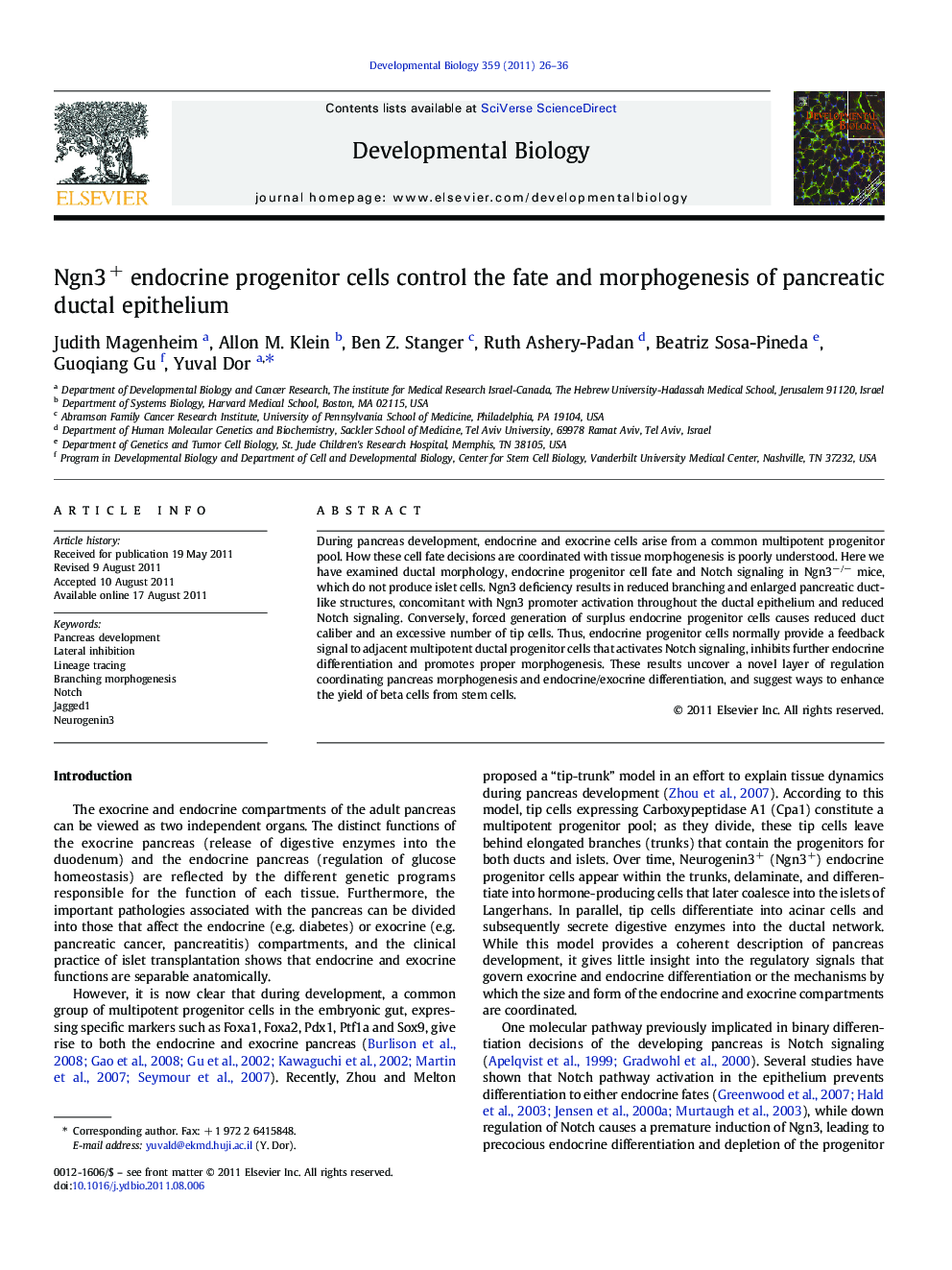| Article ID | Journal | Published Year | Pages | File Type |
|---|---|---|---|---|
| 2173588 | Developmental Biology | 2011 | 11 Pages |
During pancreas development, endocrine and exocrine cells arise from a common multipotent progenitor pool. How these cell fate decisions are coordinated with tissue morphogenesis is poorly understood. Here we have examined ductal morphology, endocrine progenitor cell fate and Notch signaling in Ngn3−/− mice, which do not produce islet cells. Ngn3 deficiency results in reduced branching and enlarged pancreatic duct-like structures, concomitant with Ngn3 promoter activation throughout the ductal epithelium and reduced Notch signaling. Conversely, forced generation of surplus endocrine progenitor cells causes reduced duct caliber and an excessive number of tip cells. Thus, endocrine progenitor cells normally provide a feedback signal to adjacent multipotent ductal progenitor cells that activates Notch signaling, inhibits further endocrine differentiation and promotes proper morphogenesis. These results uncover a novel layer of regulation coordinating pancreas morphogenesis and endocrine/exocrine differentiation, and suggest ways to enhance the yield of beta cells from stem cells.
► The link between the endocrine pancreas and duct morphogenesis was examined. ► Ngn3−/− mice have reduced branching and enlarged pancreatic duct-like structures. ► Endocrine cell formation is controlled by Notch-mediated lateral inhibition. ► All pancreatic epithelial cells in trunks are capable of turning on Ngn3 expression.
